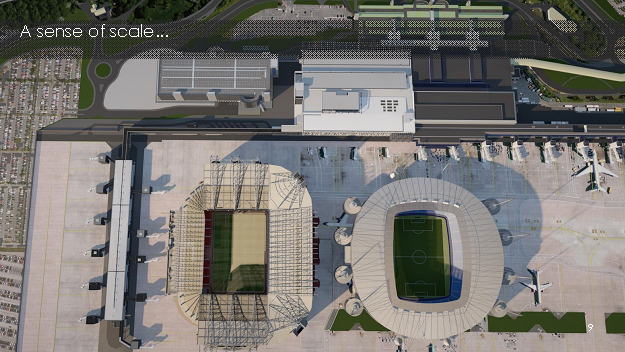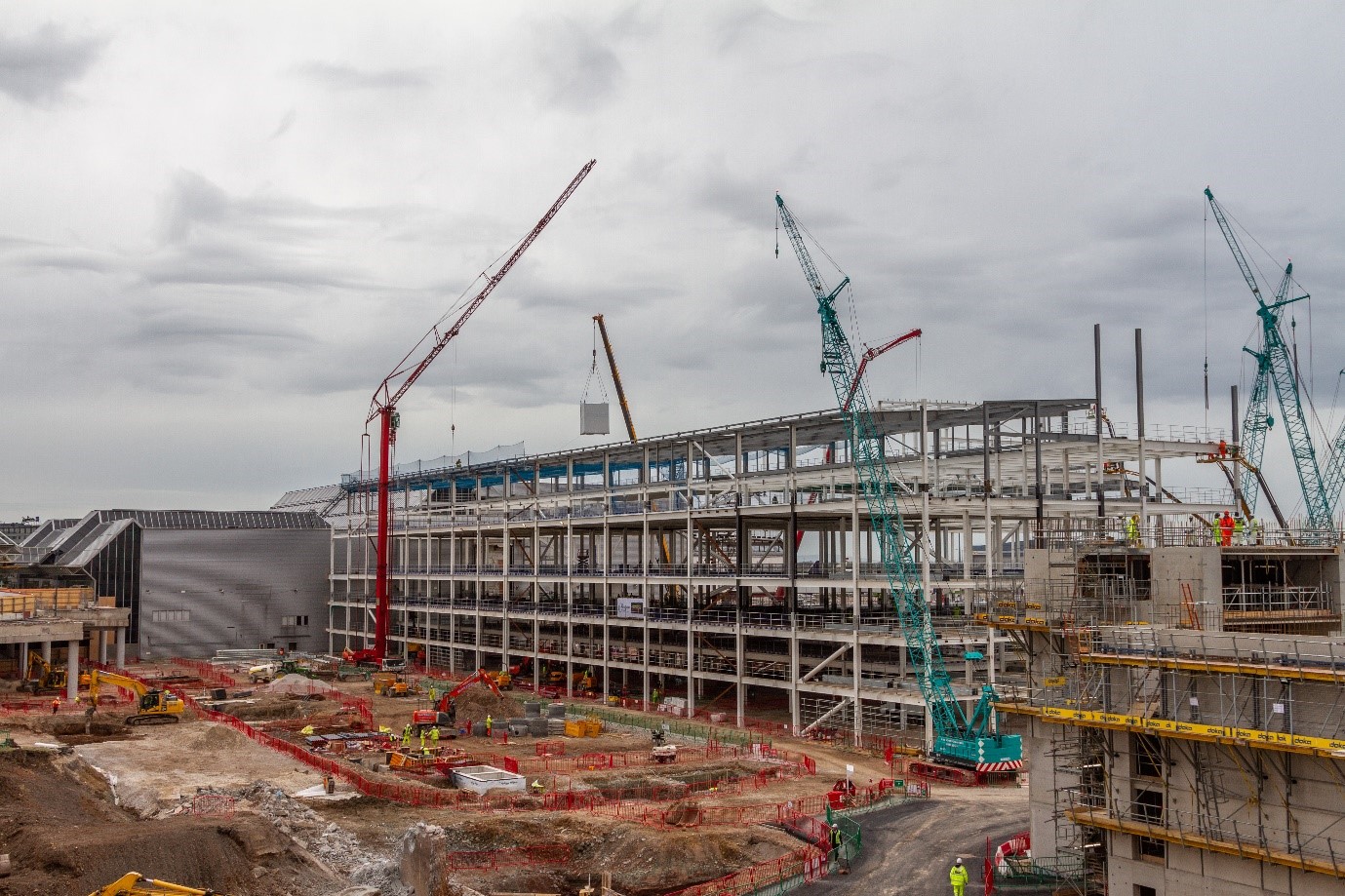Insights
The future of construction takes flight.
Manchester Airport’s mega risers.
For the past 24 months, we have been involved in the Manchester Airport Transformation Programme. It’s a massive £1bn investment project that’s the biggest ever undertaken for Manchester Airport. The aim is to develop it into a world-class operation – one that can handle millions more passengers every year.

Above: a visualisation that shows the scale of the project – featuring both the Manchester United and Manchester City stadiums!
While £1bn might sound like a lot, for a vast project such as this, it’s still a relatively tight budget.
We all know that there are big inefficiencies in the construction industry at the moment. Together with Laing O’ Rourke and Crown House Technologies we were able to offer a completely new way of working that would ensure the project was as cost-effective as possible.
The method? Design for Manufacture and Assembly, or DfMA for short.
In essence, DfMA is a way of enabling offsite construction. It’s an approach that focuses on:
- Ensuring all designs can be manufactured easily and cost-effectively
- Considering how the manufactured parts can be efficiently assembled away from the construction site
The approach is well-established in sectors like automotive and consumer goods – the industries driven by the need to produce large numbers of consistently high-quality products very efficiently.
In our world, DfMA allows for a completely different method of construction. Compared to the traditional approach – where vast quantities of raw materials are delivered to the site, and constructed by large teams of workers often in inhospitable conditions – DfMA means construction can be faster, cheaper, and safer.
An added benefit and – simultaneously – its biggest challenge is the absolute commitment to collaboration that’s required.
For the Manchester Airport Transformation project, we worked closely with Laing O’ Rourke and Crown House Technologies to establish the principles required for DfMA, before, during, and after our design process. It was incredible to see how this made for a seamless transition from our technical design to the DfMA construction drawings.
Mega results.
One of the big success stories of our DfMA journey so far was the installation of the mega risers. In May this year, just nine months into the construction programme, the first of three giant mega risers were brought to site.

To give a bit of context, each mega riser contains the ventilation ductwork, water piping, electrical containment and heating services that will serve the vast Terminal 2 building. Below is one being installed on site.
We’d been challenged to get each one designed (and fixed) before the floor plates had been finalised to ensure they could be manufactured offsite at Crown House Technologies’ facility in Oldbury.
It took just five days to install the 16 modules in a single riser, saving weeks on the overall build programme.
The use of DfMA on the Manchester Airport Transformation Project really is a win-win scenario; we have managed to save weeks on the overall build programme, introduce controlled quality to the installation, make the construction site safer by reducing the number of operatives working in tight confined spaces, and created jobs across the UK.
Check out Laing O’ Rourke’s video of the installation and the innovative engineering behind the solution.
